 |
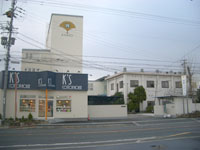
Present office and factory
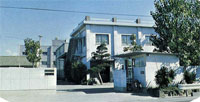 
Soon after move in 1965 |
1.The Front of the Head office and Factory
The Head office and Factory was moved here (1-5-31, Hagurazaki, Izumisano City) from downtown Izumisano in 1965.
At that time, there were still a lot of fields around the office and factory though it was located along National Highway 26 (present Prefecture Road 63), the main road which connected Osaka with Wakayama.
Our factory was a modern one that had a volleyball coat.
Kansai International Airport was opened in 1994, and an outlet mall “Rinku Premium Outlets” was opened in 2000 near us, and there have been being more and more traffic of people and cars day by day.
We have a direct sales store “K 'S COTTON HOUSE” on the left side of the front of the office and a lot of customers thoroughly enjoy shopping towels just produced.
|
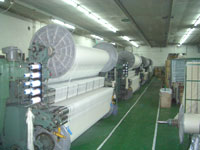 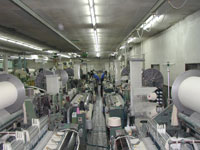
A dobby weaving machine
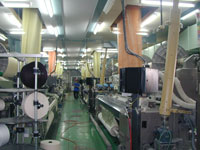 
Jacquard weaving machine
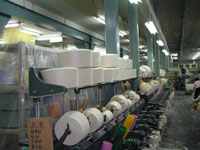 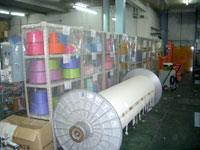 |
2.The Weaving Section
Various Towels are woven using various kinds of yarn here.
Cotton yarn is the main material, and No.20 cotton yarn is usually used for a towel. Cotton yarn we use ranges from No.10 (twice the diameter of No.20) to No.60 (one third the diameter of No.20).
Cotton yarn differs from region to region.
Most of raw cotton is imported from foreign countries now because we have very small cotton harvest in Japan.
We use various cotton yarn properly for instance San Joaquin Cotton (the U.S.A), GIZA ELS Cotton, Peruvian Cotton, Indian Cotton, Turpan ELS Cotton (China).
Recently we’ve been using synthetic fiber, too, which excels in functions such as antibacterial effect, absorbency, weak acid effect, negative ion effect, and germanium effect.
As regards “sizing” put on yarn at weaving, chemical sizing has completely been replaced with environmentally friendly natural sizing.
|
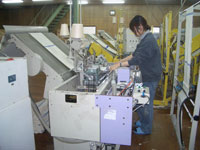 
  |
3.The Selvage Edge Sewing Section
When the toweling is made, it is one long terry cloth roll. Selvage edges are sewn here.
We try to sew as near the pile weave as possible to have a beautiful finish and lessen abrasion.
Every member holds the toweling firmly and carefully to keep the stitches straight. |
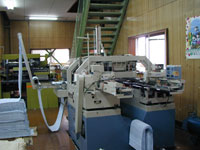 
Automatic hemming machine
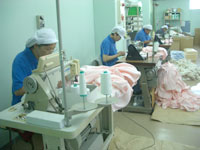 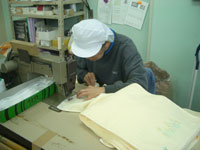
Sewing by hand
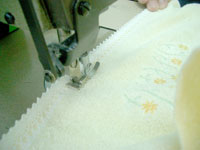 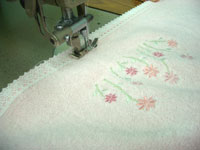
Sewing race on towel |
4.The Hemming Section
The toweling is cut and hemmed (sewn down) at the top and bottom here.
Provided that the length is regulated, an automatic towel cross hemming machine automatically cuts and hems towels at regular intervals, and sews on a name label.
At the beginning we did the hem by hand, and then an automatic hemming machine was of great use in the days of mass production.
But now we put emphasis on hand hemming again because recently more and more different kinds of towels have been being produced and items of towel which cannot be hemmed by machine have been increasing in number.
Some towels are decorated, trimmed with lace, for example. |
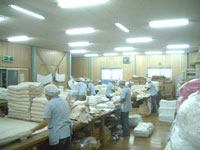 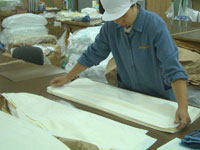
 
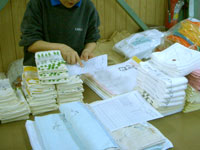 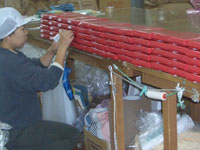
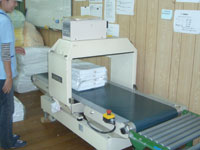 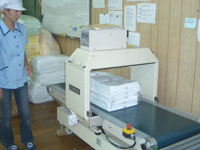 |
5.The Finishing Section
Products are inspected here.
This inspection assess whether final products meet all quality specifications (i.e. size, weight, color, the position of print and embroidery, etc.).
A bath towel is closely inspected by two workers and a face towel by one worker.
Wrapping and tagging a product is also a job of the staff of this section.
The final inspection prior to shipment takes place to verify only the approved final products are shipped according to buyers’ requirements.
To check for a broken tip and/or broken pieces of a needle in products we use a metal detector. And every time a needle breaks, the member thoroughly searches a work area and collects all broken pieces of the needle. All the broken pieces are kept in the storage box. |
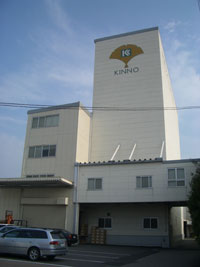 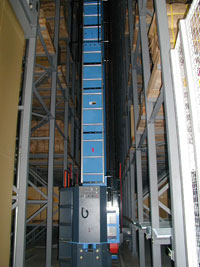 
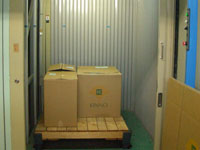 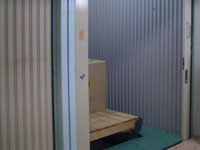
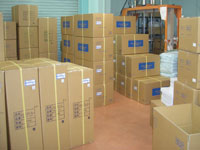 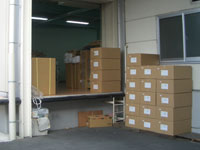 |
6.The Storage and Shipment Section
Finished products are stored in the computer-controlled automatic warehouse whose capacity is 300 tons of towels.
A required pallet out of 820 pallets is automatically taken to the picking area at the press of a key.
Goods are loaded onto a vehicle from the loading platform alongside which a vehicle of not more than ten ton GVW can be parked, and shipped to all over the country and overseas.
|
|
 |

